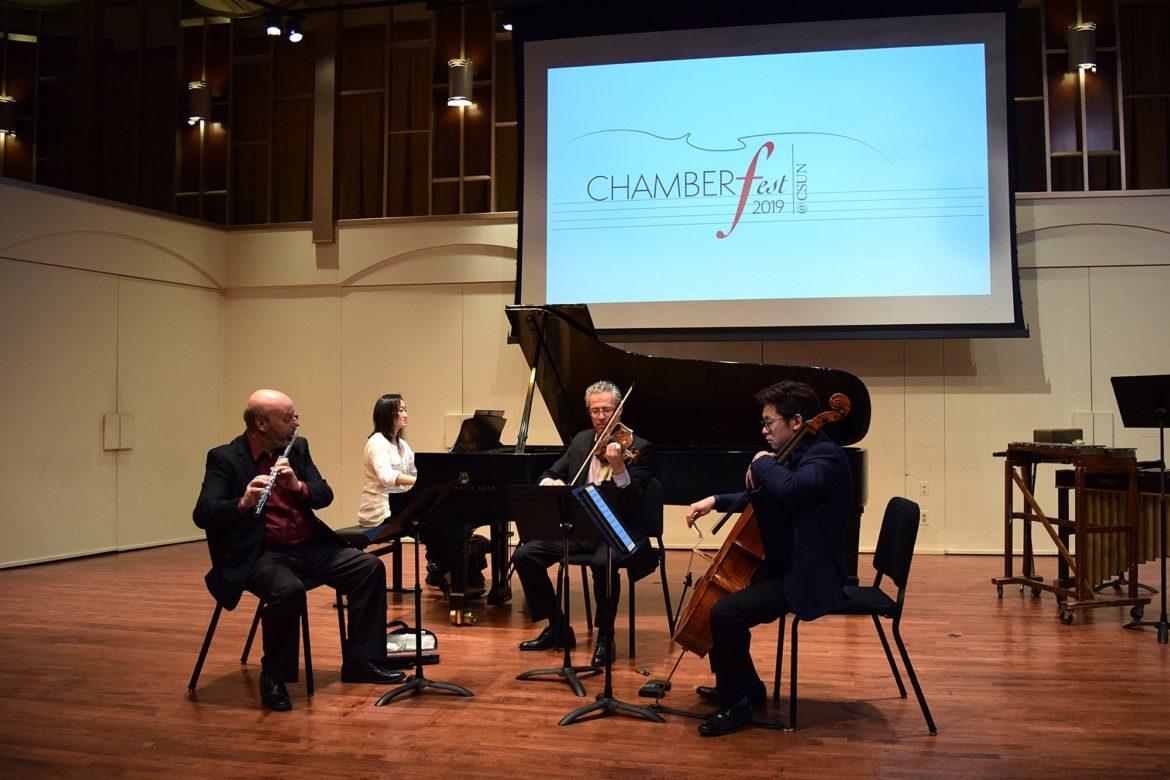The CSUN Music Department held their first large-scale chamber music festival last Thursday through Sunday. The festival was a host of not only concert events but also lectures and masterclasses taught by local and international musicians.
The co-directors of the event, Lorenz Gamma and Dmitry Rachmanov, invited the CSUN community, their fellow colleagues, and of course, any fan of chamber music to enjoy and learn about this genre.
Chamber music began in the late baroque period through the early classical period; however, it was not until the 20th-21st centuries that the genre’s development exploded. The term “chamber music” means the music was traditionally played in a small chamber, private room or a small auditorium. It is different from orchestral music because there are only a small group of musicians who have one part for each person.
“Chamber music brings different musicians together in a very intimate environment where great masterpieces of musical literature are performed,” explained Rachmanov.
The directors both come from very experienced backgrounds. Gamma, originally from Switzerland, earned his degrees from schools such as Lutheran Conservatory of Switzerland, Indiana University Bloomington and UCLA. He has been CSUN’s assistant professor of violin for three years.
Rachmanov, professor of piano and head of keyboard studies, grew up and studied in Moscow, Russia, then earned his degrees at the Juilliard School and Manhattan School of Music. He has taught at CSUN for 12 years.
The idea for ChamberFest 2019 began in 2017 during a conversation Rachmanov was having with a colleague. Afterward, he pitched the idea to Gamma and then the planning began.
Gamma explained that when it comes to planning an event of this size, “It’s a lot of logistics.” The directors said it was a lot of meetings and back-and-forth emails with the music department, as well as foundations to create funds for the festival.
Some of these musicians came from other parts of the world to perform, such as violinist/violist Ken Also from Japan, pianist Yuan Sheng from China and violinist Jeongah Moon from South Korea. The time to rehearse was also very short, as musicians had to perform that same night, which made the performance special.
“Inviting the musicians together, it’s like a jigsaw puzzle, a puzzle you are largely responsible for,” Rachmanov said.
When it came to the music selection, the directors wanted to make sure that there was a variety of both older and newer compositions being performed during the festival. Some of the newer pieces of music were composed by CSUN’s own music department faculty, Liviu Marinescu, chair of composition and theory, and A.J. McCaffrey, assistant professor and coordinator of musicianship.
Marinescu composed “Moto Perpetuo” and McCaffrey composed “Air, Ear, Ire, Hour, Aura.” These compositions were performed the first night.
The directors decided that for the first day of the festival, the music would highlight the CSUN Music Department’s talent. This was done so most of the musicians performing that night were CSUN students and faculty, and even the co-directors performed.
The music selection varied in sounding similar but not to the point where every composition sounded exactly the same. Then with each night, the number of musicians grew larger to support the large compositions so by the last performance there were eight musicians on stage.
What the co-directors want the audience to take away from this festival is not only knowledge but also an appreciation of chamber music.
“Enthusiasm for a world of music that might not necessarily be their own but yet is a world that is very easily accessible,” Gamma said.
Accessible as in streaming services such as Spotify, iTunes and Youtube, people can listen to any composer even if they’ve been gone for hundreds of years.

















